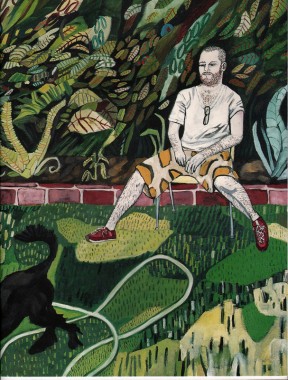
Raffi Kalenderian, Memoranda
Softcover, 24 pp., offset 4/4, 195 x 255 mm
Edition of 1000
ISBN 978-3-905714-85-2
Published by Nieves
$18.00 ·
In Kalenderian’s works everything plays on the foreground. There are no horizons and no perspective. The artist reveals his world directly to us, showing us his friends, as if he had no secrets. His friends often seem melancholic while their environment is very colourful. Colourful details of clothes, materials or furniture seem to be striving to attract the spectator’s attention and distract from the figures. We often encounter the figure Shanti. Shanti is the artist´s brother. He is painted as a young man, sometimes almost androgynous, sometimes like a tough guy. It remains uncertain whether Kalenderian wants to reveal something to us about Shanti, Frankie or Elizabeth with his paintings. None of the figures look directly at us, but all of them seem to be in contact with us. We are the witnesses of their existence.
Memoranda, the title of the book and exhibition, can be likening portraiture to notes and memos kept for history, but not too specific to take away from someone’s own unique experience. In fact Kalenderian’s works are, as the artists himself states, a proof or better an evidence of existence.
Art, Distribution, Nieves, Raffi Kalenderian, Shanti Kalenderian
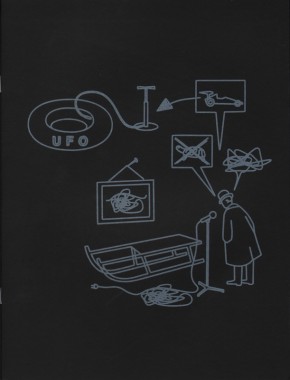
Jürg Lehni and Alex Rich, Things to Say (Viktor)
Softcover, 16 pp., offset 1/1, 195 x 255 mm
Edition of 1000
ISBN 978-3-905714-70-8
Published by Nieves
$14.00 ·
Before
Viktor there was
Hektor, a relatively simple spray-can output device driven by two motors. Invented in collaboration with the engineer Uli Franke, it made its debut as Jürg Lehni’s art-school graduation project at the Ecole Cantonale d’Art de Lausanne (ECAL) in 2002 and has performed regularly ever since.
Far from being a closed mechanical device — a black box between creative impulse and output — the concern of Hektor (and now Viktor) is the nuanced interaction between the user and the technologies of communication. The drawing machine Viktor is an amalgam of digital and mechanical technologies. A collage of tools, all of which were invented for other general and specific uses.
In response to the position of such technologies, Lehni together with Alex Rich started an ongoing e-mail correspondence about various devices, systems and technologies with which their work had a resonance. Lehni and Rich constructed an archive, one that they came to call A Recent History of Writing & Drawing and which inspired their installation at the Institute of Contemporary Arts, London (2008).
Upending assumptions that any one kind of communication is more authentic, more direct or more valid that any other, A Recent History of Writing & Drawing finds meaning, texture and poetry in the most unlikely places.
Things to Say (Viktor) is the first in a series of collected drawings produced in collaboration with invited guests to perform with Viktor every Thursday evening at the ICA throughout the duration of the exhibition, curated by Emily King.
Alex Rich, Art, Distribution, Ecole Cantonale d’Art de Lausanne, Emily King, Hektor, Jürg Lehni, Nieves, Uli Franke, Viktor
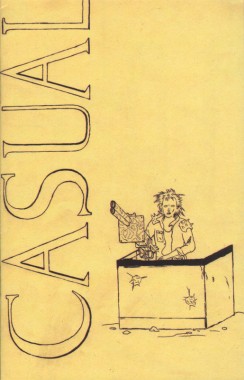
Matt Lock, Time Fears
Softcover, 16 pp., offset 4/4, 112 x 178 mm
Edition of 1000
ISBN 978-3-905714-81-4
Published by Nieves
$8.00 ·
“Nearly all of the pieces featured in this little publication were created in 2009 or 2010: a highly transformative period of time in my life. I began 2009 full of anxiety over the collapse of industrial civilization, almost all of my thinking dealt in speculating on the future. I was drawing a lot of ruins; ruins of a once high level civilization, landscapes of twisted metal, abandoned buildings and scattered garbage. Throughout this world strode weary wanderers, paranoids, thieves and criminals. There’s a streak of danger running throughout much of my 2009/2010 work. In the past, many of my characters looked as if they were hanging out rather comfortably (for the most part). These current characters are a bit more skittish, on edge. The spaces they inhabit are often unsettling… about to crumble or implode.
I’m obviously projecting a lot of my own fears and unease onto these drawings. The world that I’ve portrayed here is a broken world, a variation of a world I feel I’m being rapidly pushed towards. I find myself taking much of what I find around me and throwing it out into the future; I draw it into the future. I believe that I do this because I spend so much time in the future, mentally speaking. Time is a merciless tyrant, an enemy with whom I’ve been mentally battling this past year. I’ve always had time fears but never have they been so intense. There’s a fear of growing older, a fear of losing my youth (decay). And therein arises an urgency to “do something with myself” before I’m old and stuck in some kind of debt-trap or miserable job.
There’s a fear of the future and the large calamities that hide within it (nearly everything feels so uncertain and fragile to me). And then there’s a tremendous fear of destitution, as I’m always just barely making it by with each passing week. This overarching theme of “time fear” binds my work together and reveals the fractured nature of my mind (so much of which still resides in the future).
I seem to live in two worlds: the present and the soon-to-be. This collection of artwork is very personal to me, as I’m sure you can understand. I hope that you who identify with my time-based worries will bond with these pieces, perhaps finding your own time fears in my drawings and paintings, and I hope those of you less inclined to worry about time will find something here to ponder on and smile about.”
— Matt Lock
Art, Distribution, Insurrection, Matt lock, Nieves
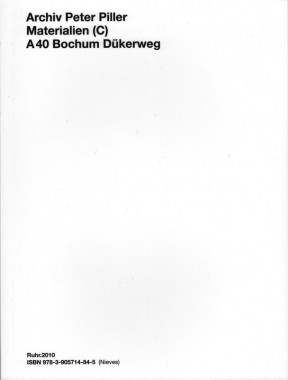
Peter Piller, Materialien (C)
Softcover, 62 pp., offset 4/4, 155 x 205 mm
Edition of 1000
ISBN 978-3-905714-84-5
Published by Nieves
$20.00 ·
Photographic portrait of the near surroundings of Ruhrschnellweg, freeway 40 in Bochum, Dükerweg with allotments, car tuning, cemetery, Burger King, noise barrier and fire station.
Art, Burger King, Distribution, Hans-Peter Feldmann, Nieves, Peter Piller, Photography
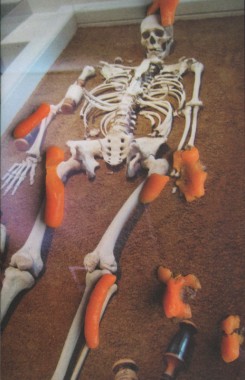
Erik Steinbrecher, Möhren in Athen
Softcover, 16 pp., offset 4/4, 112 x 178 mm
Edition of 1000
ISBN 978-3-905714-83-8
Published by Nieves
$8.00 ·
For his show
Wind in Athens/Möhren in Athen Erik Steinbrecher left Berlin for Athens, his suitcase packed with carrots. The artist’s art odyssee began. His chosen site for an intervention was the National Archaeological Museum. It is considered one of the great museums of the world and contains the richest collection of some of the most important artifacts from Greek antiquity worldwide. During his visit, Steinbrecher installed single carrots in the exhibition spaces; close to sculptures and artfacts, on bases and behind walls.
This sculptural and performative intervention has been photographed by the artist himself. For this publication Steinbrecher overworked these documents.
Art, Culture, Distribution, Erik Steinbrecher, National Archaeological Museum, Nieves
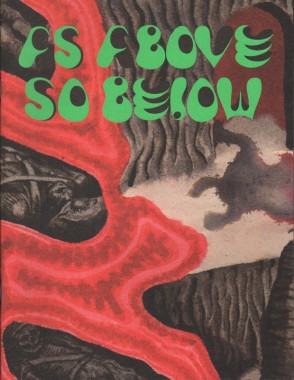
Will Sweeney, As Above So Below
Softcover, 16 pp., offset 5/5, 195 x 255 mm
Edition of 1000
ISBN 978-3-905714-78-4
Published by Nieves
$14.00 · out of stock –>
As Above So Below is a visual narrative based on a series of randomly selected photographs from my collection of National Geographic Magazine, dating between 1940 and the present day. The idea was to take visual motifs from a version of the real world and push them into the realm of the subconscious, a kind of dream generator. Dreams are made up of fragments of experiences, elements of stories which when laid side by side, often become striking or fantastical. Using a random number generating website I created a series of numbers. Each series became a month, year and page number, which were then cross referenced with a corresponding magazine. The first image that came up was from an article describing an archeological dig at a Corsican pagan tomb, the second a photograph of temple street market in Hong Kong, other references came up with pages of text and I would fix upon a phrase or name which conjured up an interesting image — such as an unfinished castle, upon an island or an animal shedding it’s skin. The theme of crossing dimensions and of an event happening simultaneously across the world emerged. The title comes from medieval hermetic philosophy, and relates to the alchemical relationship between microcosm (the body) and macrocosm (the universe).
Art, Distribution, National Geographic, Nieves, Will Sweeney
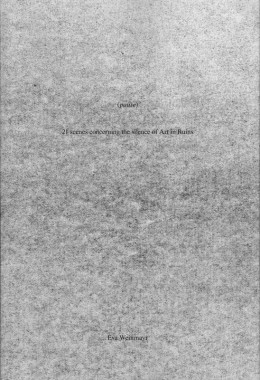
Eva Weinmayr, (pause) 21 scenes concerning the silence of Art in Ruins
Softcover, 72 pp., offset 1/1, 210 x 297 mm
Edition of 500
ISBN 978-0-9562605-4-3
Published by Occasional Papers
$16.00 ·
Why did Art in Ruins, a once prominent art collective, suddenly fall off the art world map? Did they run out of ideas, move on to other territories or simply withdraw in disgust? During brief lulls in their frenetic peregrinations around the glittering international art circuit, a loose group of artists, curators, critics and other art professionals discuss the mysterious disappearance of Art in Ruins, maintaining a sober tone of inquiry even as they encounter herds of bison, anomalous Richard Serra walls and security personnel steeped in art theory. Using actual dialogue from interviews with art professionals who knew Art in Ruins, Eva Weinmayr constructs a hypothetical play as an anti-documentary or anti-biography.
Art, Criticism, Distribution, Eva Weinmayr, Fiction, Occasional Papers, Richard Serra, Sara De Bondt, Theory, Zacheta National Gallery of Art
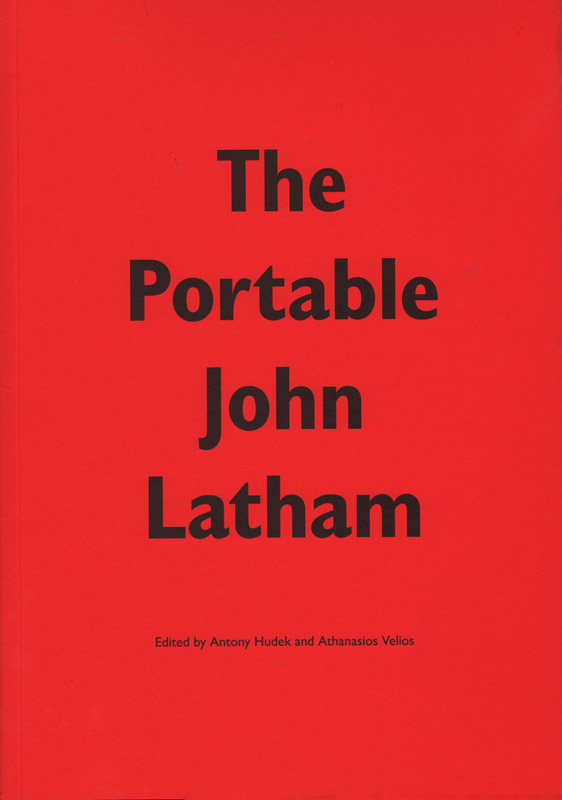
Antony Hudek and Athanasios Velios, The Portable John Latham
Softcover, 112 pp., offset 2/1, 170 x 250 mm
Edition of 1000
ISBN 978-0-9562605-5-0
Published by Occasional Papers
$22.00 ·
This book features a selection of documents from the personal archive of the late British artist John Latham (more information
here), presently maintained in his last home and studio in Peckham, South London. Through reproductions of letters, invitation cards, exhibition reviews, performance scripts and images, the publication retraces Latham’s pioneering practice over six decades, from the late 1940s to his death in 2006. Published on the occasion of
John Latham: Anarchive in association with Whitechapel Gallery, the book also includes an interview by Charles Harrison from 1968 and a glossary section.
Edited and introduced by Antony Hudek and Athanasios Velios.
In the painting and sculpture for which he is best known, Latham’s primary materials included glass, books, canvas and the spray gun. Developing alongside this concise visual language, from the mid-1950s onwards, was a cosmological theory, formulated through his art-making discoveries, that considered time and event to be more primary than the established means of understanding, based on space and matter. Termed Time-Base Theory (sometimes Flat Time Theory or Event Theory) it offers an ordering and unification of all events in the universe, including human actions, and allows an understanding of the special status of the artist in society.
Latham looked at the way in which human knowledge has become fragmented over time; split by divergent religions, ideologies and world-views. He identified the way in which the fields of science and art, despite emerging from a common root, have become separate and operate in isolation of one another: even within a field such as physics, there exist a large number of schisms and specialisations that further fragment our knowledge and understanding of the universe. John believed that this endless division would eventually lead to a kind of entropy and from that state, to a disintegration of society.
Antony Hudek, Art, Athanasios Velios, Charles Harrison, Criticism, Culture, Distribution, John Latham, Occasional Papers, Sara De Bondt, Science, Theory, Typography
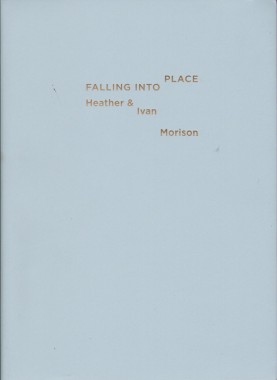
Heather and Ivan Morison, Falling Into Place
Softcover, 144 pp., offset 4/1, 155 x 215 mm
Edition of 1500
ISBN 978-1-906012-09-0
Published by Book Works
$30.00 ·
In this beautiful, limited-edition artist’s book, British artists Heather and Ivan Morison continue their inquiry into cultures of self-sufficiency and the topography of escape, bringing together sketches, drawings and an engrossing narrative: part science fiction, part history, part autobiography and part fairytale. The Morisons represented Wales at the 2007 Venice Biennale with their timber structures Pleasure Island and Fantasy Island, which were inspired by the hand-built shelters associated with the “back-to-the-land” movements of the ‘sixties and ‘seventies. As they write, “It got to the point where I just had to get out. That’s when I built my first escape vehicle.”
APFEL, Architecture, Art, Book Works, Fiction, Gerrie van Noord, Heather Morison, Ivan Morison, RAM
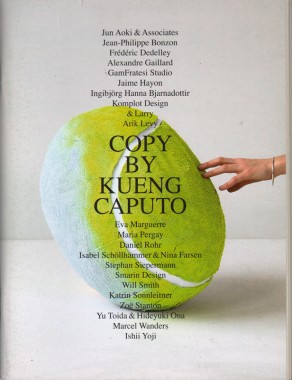
Sarah Kueng and Lovis Caputo, Copy
Softcover, 80 pp., offset 4/1, 195 x 260 mm
Edition of 200
ISBN 978-3-940215-07-9
Published by Passenger Books
$25.00 ·
This picture book documents how these two young Swiss product designers have copied objects seen at international design fairs over the last few years. Each of these copies is juxtaposed with the original, mostly on a double page spread. Using a precise approach, they exaggerate significant aspects of the original. In this way the dialog between the original and the copy represents an homage to the authors. Moreover, the originality of the copy shows what inspirational reading this makes. This wonderful artist book shows the Swiss duo’s incredible sense of humor besides their original vision and innovative design. An edition of 200 copies.
Art, Aude Lehmann, Franziska Nyffenegger, Lovis Caputo, Passenger Books, RAM, Raphael Hefti, Sarah Kueng, Urs Lehni
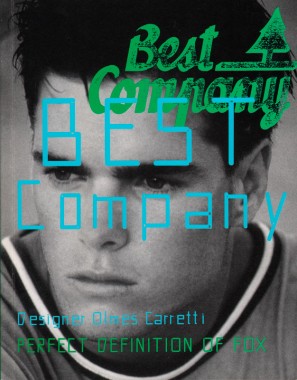
Olmes Carretti, Best Company
Softcover, 120 pp., offset 1/1, 195 x 250 mm
Edition of 1000
ISBN 978-3-940215-00-0
Published by Passenger Books
$29.00 ·
Designer Olmes Carretti
Perfect Definition of a Fox
As vintage couture clothing becomes more and more collectible, the next step is no surprise: collectible sweatshirts. Specifically, the incredibly beautiful, heavy-duty “high-school sweats” from Best Company in the 1980s, designed by Italian designer Olmes Carretti. Decorated with motifs derived from nature and sports, based on precise natural studies and drawings, these high-quality sweatshirts are deeply appreciated for their design artistry. Graphic design wizards Vier5 visited Carretti at his home in Reggio Emilia and created this absorbing book, including dazzling photos documenting individual shirts, explanatory texts and interviews with the designer. Best Company closed almost 20 years ago, and it has since achieved cult status: this book shows why.
Best Company, Fashion, Interview, Olmes Carretti, Passenger Books, RAM, Vier5
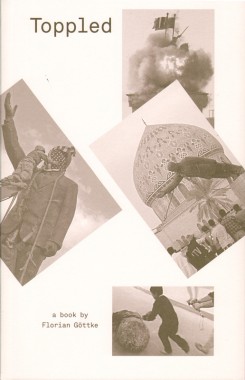
Florian Göttke, Toppled
Softcover, 150 pp., offset 4/4, 155 x 240 mm
Edition of 1000
ISBN: 978-94-6083-016-7
Published by Post Editions
$39.00 ·
Life as an absolute dictator may not be all it’s cracked up to be. Artist Florian Gottke collected a huge number of images of the toppled statues of Saddam Hussein on the Internet, and then started looked at them carefully. A close reading of these images reveals an astonishing amount of information about what happened in Iraq, about the statues’ desecration and humiliation, their transformation from manifestations of Saddam’s totalitarian power into icons for the defeat of his regime, their expulsion from the public sphere, their appropriation into his enemies’ museums and their symbolic reinterpretation for use in anti-war protests. Even in our modern image culture, the ancient magical link between the person (Saddam) and his representation (statue) is still alive in the human psyche.
Alena Alexandrova, Art, Florian Göttke, Iran, Iraq, Mariska van den Berg, Photography, Post Editions, RAM, Rebecca Sakoun, Saddam Hussein, Sculpture
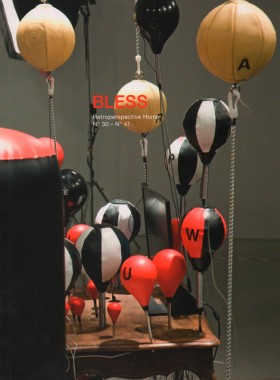
Bless, Retrospective Home Nº30 — Nº41
Softcover, 416 pp., offset 4/4, 185 x 250 mm
Edition of 2000
ISBN 978-1-934105-12-2
Published by Sternberg Press
$45.00 · out of stock
Heralded as one of fashion’s most innovative designers, the Paris and Berlin-based duo BLESS (Désirée Heiss and Ines Kaag) refuse to capitalize on any one milieu, and instead explore the differences between and the mixing of the systems of art, fashion, and design. This book brings together visual and written documentation of BLESS’s last twelve collections (N° 30-N° 41), continually prompting and challenging the question of where a product begins and ends. Their latest project, N° 41 Retroperspective Home, culminates in an exhibition / intervention of the same title at the Kunsthaus.” The hybrid nature of [BLESS’s] output cries out to be tackled by an institution like ours,” state the curators of the exhibition,” but at the same time makes it very difficult to do so … This is precisely where the challenge of our exhibition lies, seeing art as design and fashion as architecture.”
Art, Bless, Desiree Heiss, Fashion, Ines Kaag, Manuel Raeder, RAM, Sternberg Press












